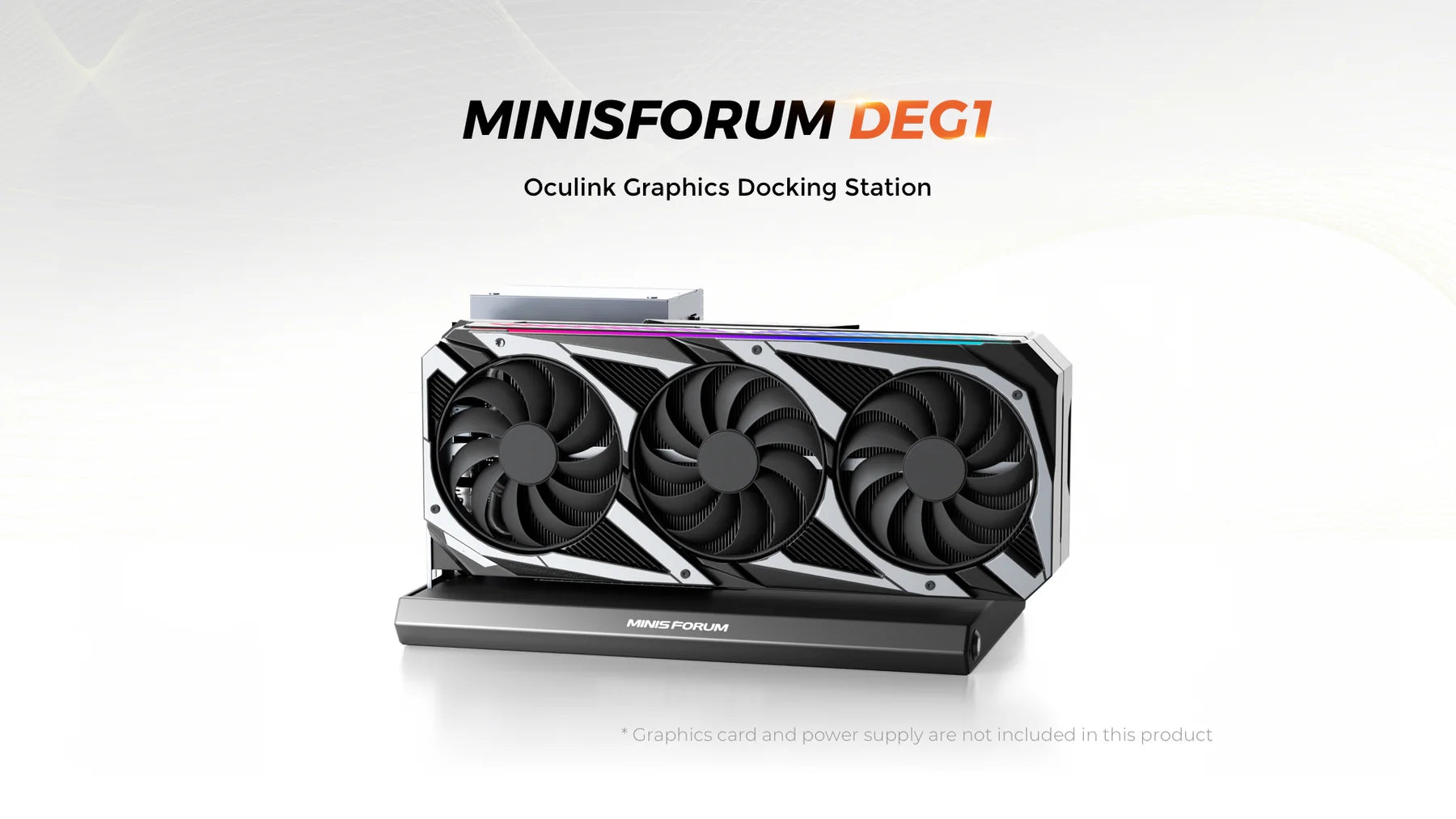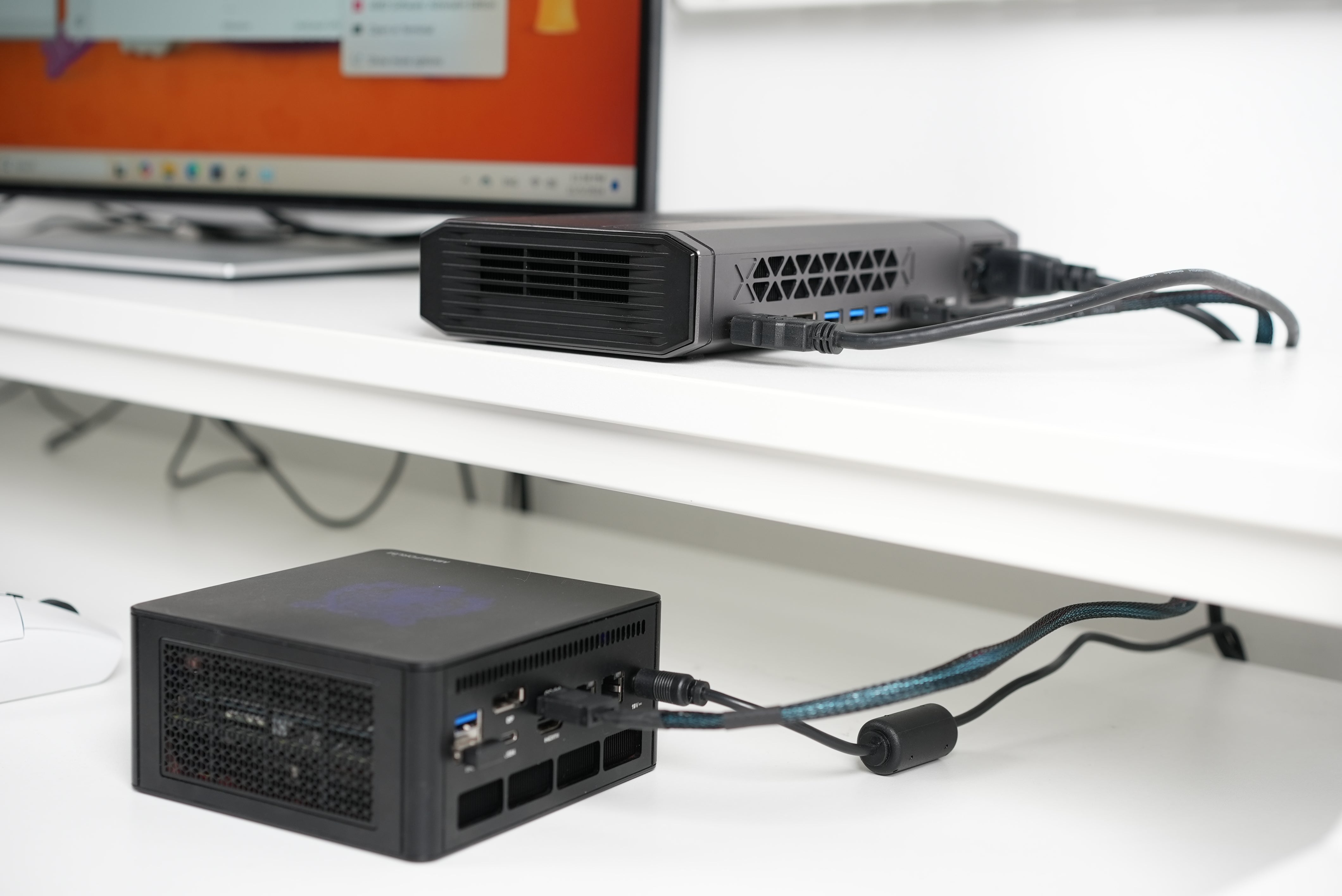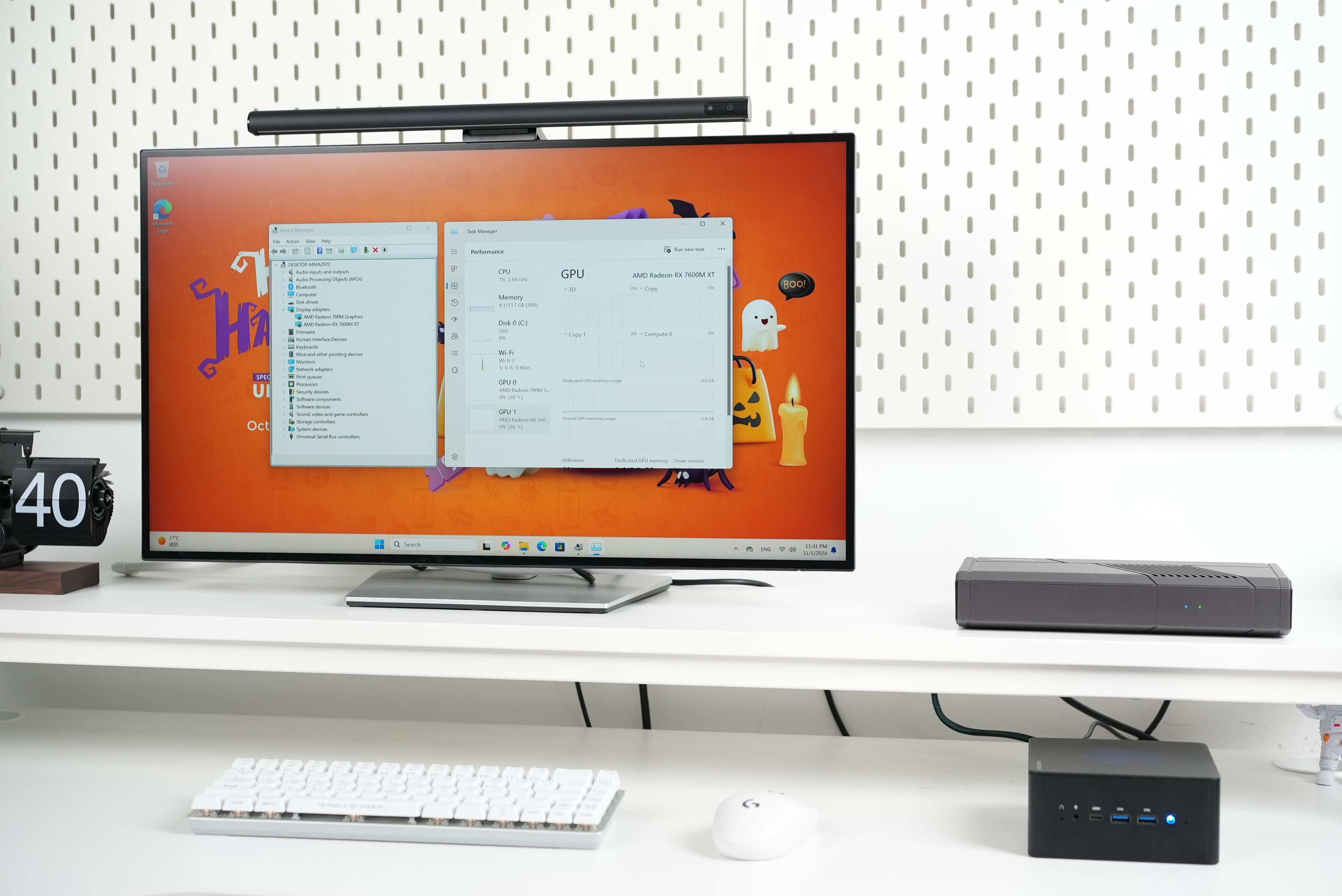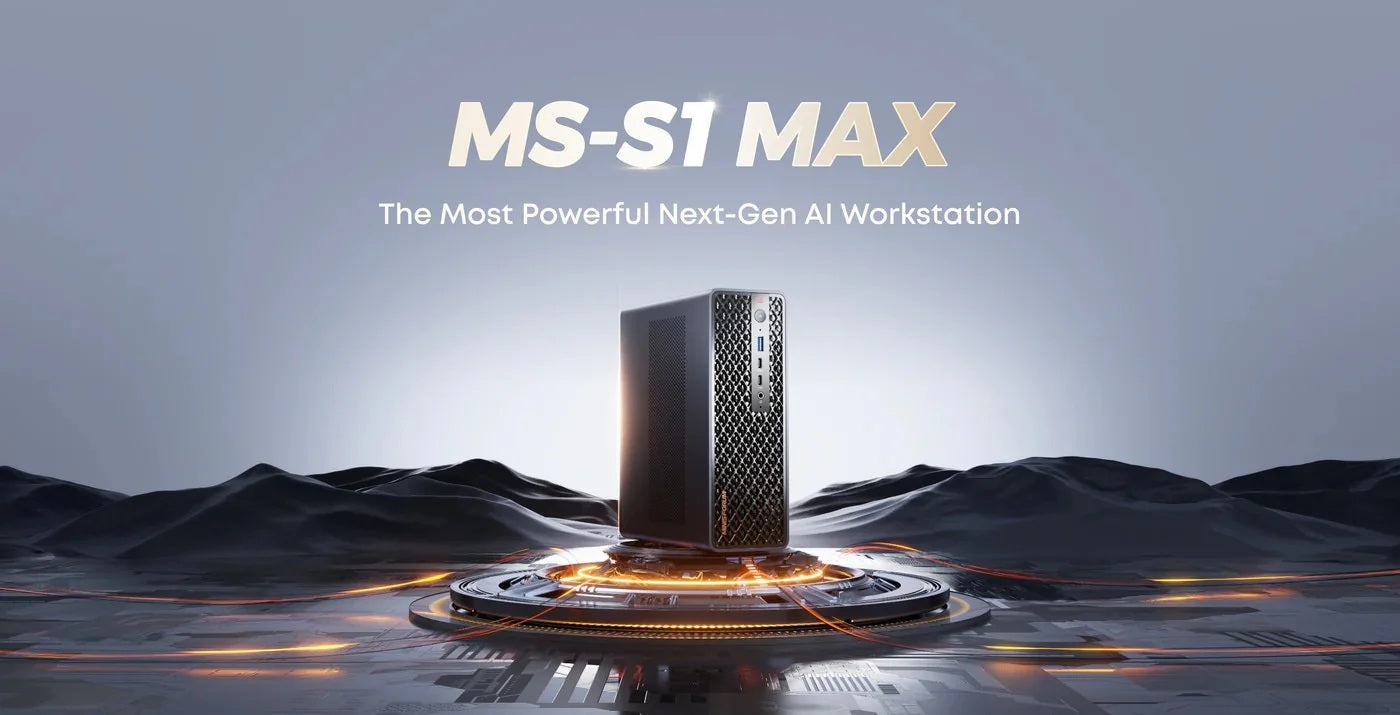Blog
Exploring the Practicality and Usage Conditions of eGPU Docks
In recent years, mini PCs have been gaining popularity and improving in performance, becoming serious competitors to traditional desktop computers. However, many users still find that their mini PCs or laptops lack sufficient graphics power. Others prefer to keep their everyday portability separate from high-performance graphics tasks. For these users, upgrading their computer or hardware isn’t the only option when they need a graphics boost. They can turn to external graphics solutions like eGPU docks.
An eGPU is an external graphics card solution for computer hosts. Its primary function is to allow mini PCs and laptops with low-performance or integrated graphics cards to connect to a high-performance graphics card. This provides a significant graphics power upgrade without changing the original hardware. Currently, most eGPU docks connect to the host computer via an OCuLink interface, which has minimal signal loss. This article focuses on two types of eGPU docks - non-eGPUs (those without a built-in GPU) and eGPUs (those with a built-in GPU). Using the Minisforum DEG1 and MGA1 as examples, this article will introduce the usage conditions and practicality of eGPU docks and provide purchasing suggestions.
I. An Overview of the Two Types of eGPU docks
Non-eGPU docks, as the name suggests, don’t come with a GPU and require users to install one. The Minisforum DEG1 is such a product. It uses an OCuLink interface and supports a PCIe 4.0 x4 channel with a bandwidth of up to 64GT/s, meeting the data transfer needs of high-performance graphics cards. With dimensions of 270×175×41mm, it’s compact and portable. The DEG1 supports ATX and SFX standard power units, allowing users to choose a suitable power source.
However, users need to purchase a graphics card and power supply separately, and the installation process can be complex for those unfamiliar with hardware.

In-contrast, eGPU docks come with a built-in GPU and are ready to use out of the box, eliminating the need for users to buy and install a separate GPU. The Minisforum MGA1 is a typical example, featuring the AMD Radeon™ RX 7600M XT graphics processor with 8GB of GDDR6 memory. It connects to the host via an OCuLink interface and supports a PCIe 4.0 x4 channel. Its robust metal casing offers excellent heat dissipation, making it a hassle-free option for users.
Nevertheless, it also has limitations. It might not include the latest, ultra high performance graphics cards, and the GPU can’t be changed at will.

II. Usage Conditions
(1) Device Interface Compatibility
For both type of eGPU docks, device interface compatibility is the first consideration. The DEG1 and MGA1 both use an OCuLink interface, so only devices with an OCuLink interface or those that can be converted to OCuLink can use them. Currently, some mini PCs and laptops, such as certain Minisforum mini PCs, have an OCuLink interface. Therefore, before purchasing an eGPU dock, users need to confirm whether their device has a compatible interface.
(2) Power Supply
Non-eGPU docks require an external graphics card, which often has a high power consumption. Thus, a suitable power supply is needed to meet the power demands of both the graphics card and the eGPU. Take the DEG1 as an example. It supports ATX and SFX standard power units, and users need to select a power source based on the graphics card’s power requirements. For eGPU docks like the MGA1, the power configuration is relatively fixed. Users don’t need to worry much about power matching as long as the eGPU’s power adapter works properly.
(3) Heat Dissipation Conditions
High-performance graphics cards generate a lot of heat during operation. Good heat dissipation is crucial for ensuring stable device operation. The DEG1 relies mainly on the external graphics card and the device’s own cooling system. This requires users to ensure the graphics card’s cooler works properly and maintain good ventilation when using the eGPU. The MGA1, with its metal casing and internal cooling fan, has better heat dissipation. However, during prolonged high-load operation, attention still needs to be paid to heat dissipation to prevent performance drops or device damage due to overheating.
III. Practicality Analysis
(1) Performance Improvement
Non-eGPU docks (DEG1): Supporting high-performance graphics cards like the Nvidia RTX 4090, it can significantly enhance performance for professional applications with extremely high graphics demands, such as 3D modeling, video editing, and scientific computing. Users can select a suitable graphics card based on their needs and budget to optimize performance. For instance, architecture professionals can install professional graphics cards to speed up model rendering, while gamers can use high-performance gaming cards to enjoy large-scale games in high resolutions and quality settings.
eGPU docks (MGA1): The built-in AMD Radeon™ RX 7600M XT is a mid-range graphics card that meets mainstream gaming and daily graphics processing needs. For users who don’t want to spend much time and effort selecting and installing a graphics card but still hope to boost their device’s graphics power, the MGA1 offers a simple, convenient, and effective solution. It can run many popular games smoothly at 1080P resolution and provides good performance support for basic graphics design and video editing.
(2) Function Expansion
Non-eGPU docks: Some of these products may offer additional interface expansion, such as USB, HDMI, and gigabit Ethernet ports, enriching the device’s peripheral connectivity. However, this depends on the eGPU dock’s design. The DEG1 primarily serves as a platform for external graphics cards, with relatively limited interface expansion. But users can use conversion devices to achieve more functionality.
eGPU docks: Typically equipped with a variety of interfaces to meet users’ peripheral connection needs, the MGA1 provides DP and HDMI video interfaces, USB-A and USB-C data interfaces. This makes it convenient for users to connect peripherals like displays, keyboards, mice, and mobile storage devices, enhancing work efficiency and entertainment experience.
(3) Portability
Non-eGPU docks (DEG1): With a compact and lightweight design, it’s easy to carry. Users can connect it to compatible devices whenever high - performance graphics cards are needed, meeting the performance demands of mobile office and entertainment scenarios. However, the need to carry an additional graphics card and power supply affects portability. In particular, when using a larger-sized graphics card, the convenience of carrying and connecting is reduced.
eGPU docks (MGA1): Its relatively larger size and weight make it less portable. But for most users, it’s still convenient to carry and use in daily commuting and business trips. The advantage of not having to carry an extra graphics card partially offsets the weight disadvantage. Users can simply connect the MGA1 to the device and start using it immediately.
IV. DEG1 and MGA1 Comparison
Minisforum DEG1
Minisforum MGA1
Non-eGPU dock
eGPU dock
Requires separate installation
Built-in AMD Radeon™ RX 7600M XT graphics card
Supports high-performance graphics cards with great potential for performance improvement, depending on the installed card
Mid-range graphics card meeting mainstream gaming and daily graphics processing needs
OCuLink interface
OCuLink interface
Requires a separately equipped suitable power source
Uses a dedicated power adapter
Relies on the graphics card and device’s own cooling system, requiring proper ventilation
Metal casing + cooling fan, with good heat dissipation
Compact and lightweight, but carrying an extra graphics card and power supply affects portability
Slightly heavier, but no need to carry an extra graphics card, making portability acceptable
Relatively low price, but additional purchase of graphics card and power supply leads to uncertain overall cost
Relatively high price, but ready - to - use out of the box
V. Purchase Recommendations
For professional users: If you have extremely high graphics performance requirements, such as for professional graphics design, 3D modeling, or video post - production, and have a sufficient budget, choosing a non-eGPU dock like the DEG1 and installing a high-performance professional graphics card based on your needs is a better option. Although it requires more time and effort upfront to select and install a graphics card and equip a suitable power source, in the long run, it better meets professional work needs and offers higher performance expandability and flexibility.
For casual gamers: For most casual gamers who want to run mainstream games smoothly at 1080P resolution without the hassle of hardware installation and configuration, the Minisforum MGA1, an eGPU with a built-in AMD Radeon™ RX 7600M XT graphics card, is a good choice. Its ready-to-use feature eliminates concerns about graphics card installation and compatibility. Simply connect it to the device, and you can start gaming.
For users prioritizing portability: If portability is your top priority and you have relatively low graphics performance requirements, occasionally needing to perform simple graphics processing or light-duty gaming, the Minisforum DEG1 paired with a smaller-sized graphics card and lightweight power supply, or an eGPU with a built-in low-power graphics card, may be more suitable. This ensures a certain level of performance while minimizing device size and weight for easy carrying and use in various scenarios.

In general, as a tool that enhances device performance and expands functionality, both non-eGPU docks and eGPU docks have their own advantages and applicable scenarios. When purchasing, users should consider their actual needs, device conditions, budget, and portability requirements to choose the most suitable eGPU dock product.
Leave a comment
All comments are moderated before being published.
This site is protected by hCaptcha and the hCaptcha Privacy Policy and Terms of Service apply.




